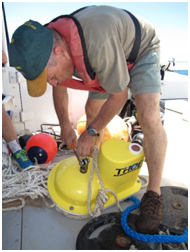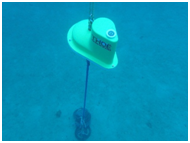

| While mining is an important part of the new Caledonian economy, being the third top nickel producer in the world, New Caledonia is also home to the third largest barrier reef in the world. This barrier reef and its associated lagoons were listed as a world heritage site in 2008. Given the biological diversity present in these ecosystems, it is essential to ensure these industrial activities do not have any detrimental effects on the marine environment, by performing adequate monitoring.
One mining operator has their marine outfall located within one of the world heritages zones and uses THOË water samplers to monitor dissolved metals concentrations in the waters juxtaposed to the outfall. Deployed on mooring lines the six THOË samplers have been used for over three years to provide time series data on dissolved metal concentrations. Positioned at increasing distances from the outfall, monitoring is conducted over two-month periods and several times a year at a depth of approximately 35 meters. Local regulatory authorities require Vale to ensure compliance with strict release limits, but Vale must also demonstrate no detrimental effects are observed in the surrounding environment. For this reason, continuous monitoring is preferred over grab sampling. In addition to the continuous data collected, sampling logistical costs have been vastly reducing with only two trips required every two months.
|



